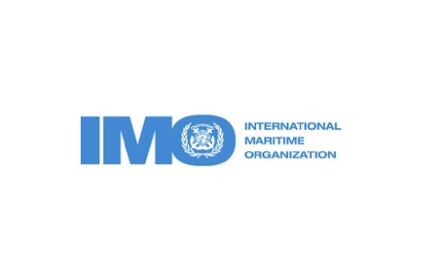Historically, the most common way of financing ships has been through debt and equity.
However, over the past decades and especially over the last 10 years, ship leasing has become a very significant competitor and a serious alternative to bank finance for the provision of ship finance.
What is leasing?
Leasing is a process by which one party (lessee) obtains the full operational use and control of a fixed asset (ship) for which they must pay a series of rentals to the owner (lessor) of the ship for an agreed period.
There are different types of ship leasing transactions with the most common being: the operating lease and the finance lease. Their structures and terms are also significant from an accounting treatment perspective.
A finance lease is a risk where at the end the residual risk (ship) is transferred to the lessee whereas with an operating lease the residual risk (ship) stays with the lessor at the end of the lease period.
What has made ship leasing so competitive?
For a very capital intensive industry such as shipping, liquidity management is the most important motivator.
Leasing transactions tend to have higher lending to asset ratios which reduces the capital requirements per transaction. In addition, the loan profile is longer than bank finance thus often achieving a lower breakeven despite the higher lending ratio.
Leasing provides better funding diversification especially given the departure over the last decade of many large shipping banks which has restricted funding choice.
With operational leases too, the risk of technological obsolescence is mitigated.
Lastly, leases are possible at times of economic difficulty to release valuable resources or to reduce debt servicing requirements via sales and leasebacks.
Overall financing costs, though, have tended to be higher than those of banks and leases are more complex and require more time to conclude. Due to the lack of familiarity and the inability to have physical meetings between lessors and potential clients, reaching an agreement is often assisted by one of the financial boutiques that specialize in Chinese leasing.
All in all, there are significant benefits to the lessee.
For the Lessor, leases offer an attractive risk / return profile, the ability to lend larger amounts and achieve a significant financial leverage, tax benefits and the possibility of residual value speculation.
The development of ship leasing and of Chinese leasing companies
Some historical context
Leasing was carried out in the 1960s and 1970s by western based and Japanese lessors. It was characterised by the presence of long term charters which underpinned the shipping risk. An early example can be seen in Orix which was set up as Orient Leasing Co. LTD., in 1964. Japanese cross border leasing in Japanese Yen started in 1981 and subsequently developed into US Dollar leasing. Over the past decades and especially in the last decade, there developed increased interest in leasing by international and Greek owners as well as by lessors.
With the rapid development and growth of China over the last 20 years and especially in the last decade, the Chinese financial sector grew initially to serve Chinese shipping clients and local shipbuilding and subsequently international clients on an international basis. Most Chinese banks developed their own leasing subsidiaries which have come to dominate the global shipping leasing business. Please see in Table 1 by Smarine © the lessors’ shipping portfolios and growth since 2017 to a total of US$66.5bn which is approximately 15% of global ship finance (Petrofin Research ©). It is important to note that the lessors’ portfolios cover the total value of the shipping assets and not only the intrinsic debt of the lessees.

There is a wide array of reasons that explain the expansions of the global ship leasing, but what is clear is that the market has experienced exponential growth during the last decade. At the forefront now are Chinese leasing transactions, which today are a prime source of finance, accounting for a growing share of global ship finance. Interest has since shifted out of the newbuilding market and leasing companies have been heavily involved in the second-hand market. During the first half of 2020, due to the pandemic these was a slowdown in fresh business flow but despite this there was a year on year growth of 11% in 2020 in Chinese leasing.
In Table 2, you can see the composition and growth of the top 10 Chinese lessors over the last two years. Chinese leasing houses continue to conclude new deals this year. There were news reports of CSSC Shipping, the financial leasing unit of China State Shipbuilding Corporation (CSSC) announcing plans to issue two bonds worth a total of US$800 million due in 2025 and 2030 and to use the net proceeds primarily to develop its leasing business and refinance its existing indebtedness. Bocomm Leasing also made the headlines with a US$650 million contract signed with Shell for a dozen dual-fuel long range tankers. Japanese and South Korean financial institutions are also active in this business area. In June 2020, the Hong Kong government published an attractive ship leasing tax incentive in order to compete with tax-friendly schemes in Singapore and other jurisdictions by offering profit tax concessions for qualifying ship lessors and ship-leasing managers (Ince & Co). The incentive applies to Hong Kong-based managers using separate Hong Kong-incorporated special purpose companies to own and lease ships for use outside Hong Kong waters based on operating or finance leases entered into with either affiliated or third-party lessees. The ship-leasing company must have an adequate number of full-time employees in Hong Kong (in any event, not less than two) and an adequate annual operating expenditure in Hong Kong (in any event, not less than approx. US$1million), whereas the figures for a ship leasing management company are respectively one person and US$128,000. The conditions are said to be in general less onerous than those of Singapore and has been designed to help promote Hong Kong as the preferred jurisdiction for ship-leasing activities (Ince &Co).

What next?
It is expected that shipfinance, both bank related and leasing related, will shift even further towards Asia at the expense of Europe and the U.S. as China has weathered the Covid-19 storm better than the West and as there is still an exodus of major European banks. Covid-19 crisis has provided an important stress test for Chinese leasing which it seems to have passed well. A number of shipowners have increasingly turned to Chinese leasing houses for capital but if these lessees decline to exercise their purchase options at the end of the charter period, Chinese lessors could end up owning a very large number of vessels, including those that operate in more challenged sectors such as offshore.
Sale and leaseback deals are becoming subject to more stringent screening, larger transactions and companies fare best and there is an increasing need for transparency. What remains for sure is that the ship sale and leaseback market and newbuilding as well as second hand vessel leasing is no longer an alternative, but a key source of finance.
* Head, Petrofin Research©










